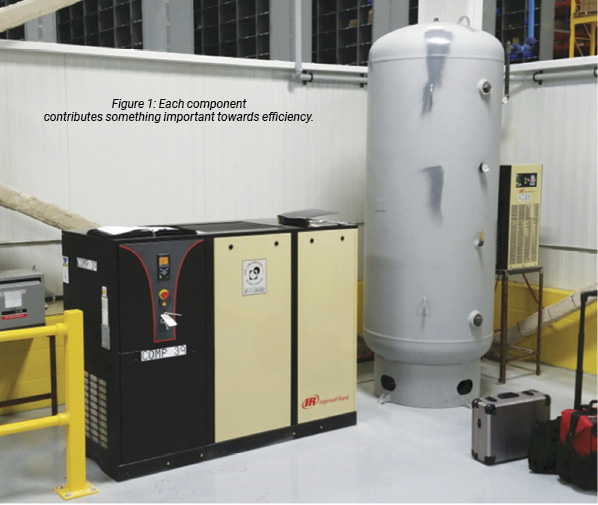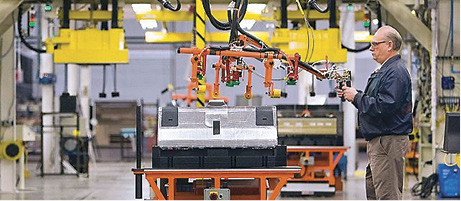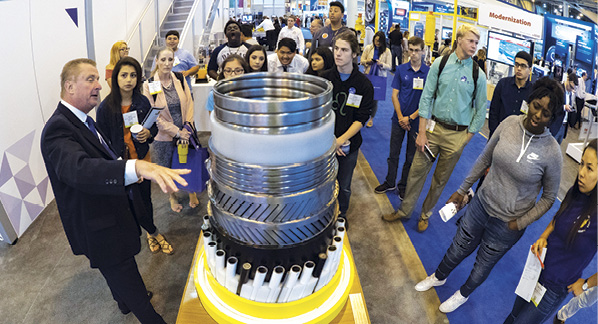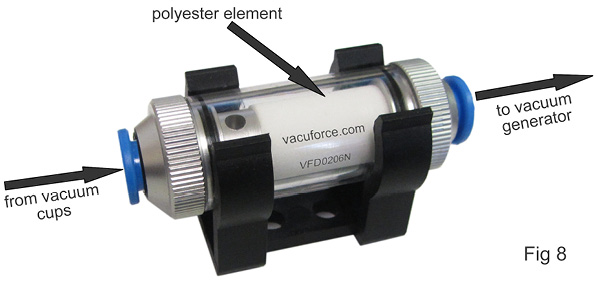Important Compressed Air Components
By Ron Marshall, Marshall Compressed Air Consulting

What is the most important component in this picture, in terms of efficiency?
Is it the air compressor? The compressor in this picture is a very efficient variable speed drive variant that speeds up and slows down in concert with the actual demand on this system. In doing so, it minimizes wasteful unloaded run time compared to that which standard load/unload compressors consume while running lightly loaded. This compressor is quite important to this system, but perhaps not the most important component.
Is it the air dryer, tucked away behind the storage receiver? This air dryer is a thermal mass type. Instead of consuming full power when running lightly loaded, this dryer starts and stops, not unlike a home refrigerator, and in doing so, it only consumes as much energy as required to lower the dew point of the air to near the freezing point of water, this ensures water removal and a dry supply of compressed air to the plant.
Is it the piping? The piping in the picture is the aluminum variety that has a smooth internal surface that reduces friction and lowers pressure loss. This piping style not only saves energy, but it is also quite easy to install, saving labor over standard threaded steel piping.
Is it the storage receiver? It’s obvious this storage receiver is bigger than most. The storage receiver provides a nice quiet zone where the compressed air can cool and drop any entrained moisture. And the large volume of the receiver ensures that the connected air compressor cycles on and off, or loads and unloads at a low frequency, keeping the compressor running efficiently and running in a manner that is not reducing the life of the unit. The receiver also stores air, making large gulps of flow available to any downstream demands, without any excess drop in pressure, or the need to run a larger compressor.
Or is it the instrumentation in the storage bags on the floor? These instruments were used in measuring the old inefficient components that were previously installed in this location. Using the data these instruments collected, this customer was able to learn that they were consuming 60% more energy than they needed, all due to some poor compressed air components. Using this information, they were able to calculate, with the help of their service provider, that these new components would qualify for a substantial utility financial incentive, and save them enough operating costs in two years to pay for the new equipment. These instruments have also informed them that these savings are real, and their new equipment is operating quite efficiently.
It is up to you to judge which is the most important part of a good, efficient compressed air installation. Perhaps each component in turn provides an equal part of a complete and excellent installation. If you are looking to save energy, have your service provider measure your system and help you find the best combination of benefits to meet your company’s needs.
Ron Marshall is owner of Marshall Compressed Air Consulting, a company that specializes in compressed air efficiency assessments.Visit www.compressedairaudit.com.
Join the LinkedIn discussion group: Compressed Air Efficiency







